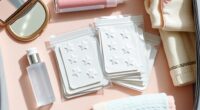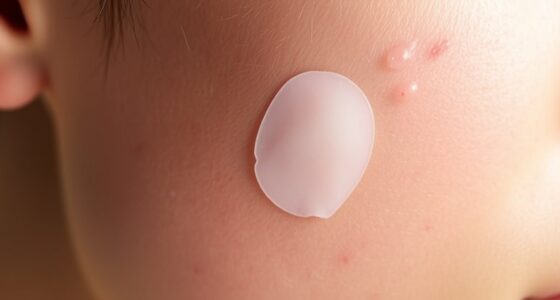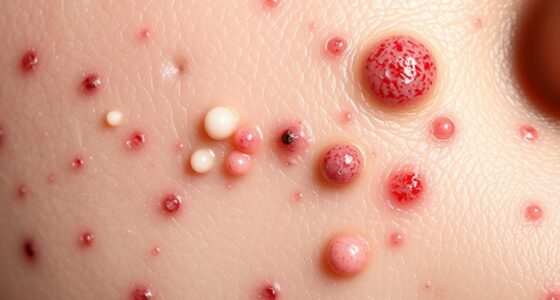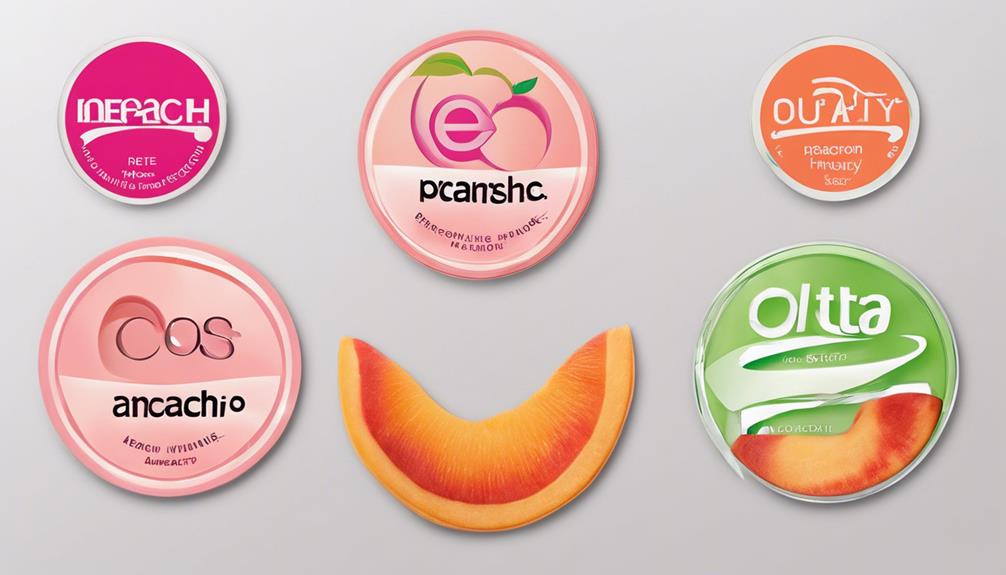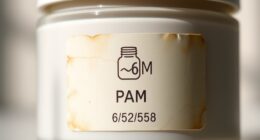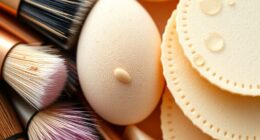Occlusion plays a crucial role in how well an acne patch works by forming a barrier that protects your skin from outside bacteria, dirt, and irritants. It helps keep active ingredients like salicylic acid in contact with the pimple longer, boosting their effectiveness. This barrier also slows down bacteria growth and reduces inflammation, promoting faster healing. To learn more about how occlusion accelerates acne recovery, keep exploring this topic further.
Key Takeaways
- Occlusion creates a physical barrier that protects the pimple and promotes natural healing.
- It prevents bacteria and debris from entering pores, reducing infection and inflammation.
- Occlusion enhances the contact time of active ingredients, increasing their effectiveness.
- It accelerates healing by limiting exposure to airborne bacteria and environmental pollutants.
- Occlusion supports skin resilience, minimizes scarring, and fosters a healthier skin barrier.

Occlusion and acne patches have become popular tools in skincare because they effectively target blemishes while minimizing irritation. When you apply an acne patch, you’re creating a physical barrier over the pimple, which plays a vital role in how well the treatment works. This barrier not only protects your skin from external contaminants but also influences the skin’s natural healing process. One of the key factors in this process is maintaining a healthy skin barrier. A strong skin barrier keeps moisture in and prevents irritants and bacteria from penetrating your skin, which is essential for acne recovery.
By occluding the blemish, the patch prevents excess bacteria and debris from entering the pores. This is important because bacteria buildup is a common cause of inflammation and worsening acne. When bacteria are prevented from multiplying within the pore, the likelihood of infection and further breakouts decreases. The occlusion effect also helps to contain the active ingredients in the patch, allowing them to work more efficiently. For example, ingredients like salicylic acid or hydrocolloid are more effective when they stay in contact with the pimple for a longer period, breaking down the debris and reducing inflammation.
Occlusion enhances ingredient effectiveness by keeping active compounds in contact with the blemish longer.
Your skin’s natural response to occlusion is to accelerate healing. When you cover a blemish, you create an environment that encourages the skin to repair itself more quickly. This environment minimizes the exposure to airborne bacteria and environmental pollutants, which can otherwise aggravate the condition. Additionally, occlusion limits the transfer of bacteria from your fingers or other surfaces onto the blemish, reducing the risk of further infection. This is especially beneficial if you tend to pick at your skin, as the patch acts as a physical reminder to avoid touching the area.
It’s important to note that effective occlusion fosters bacteria prevention by creating an ideal environment for healing while blocking entry points for harmful microbes. This means your skin can recover with less risk of secondary infections or scarring. Properly used, occlusion and acne patches help to contain the blemish, control inflammation, and promote faster healing. They support your skin’s natural barrier function, preventing bacteria from infiltrating the pores and causing new breakouts. In this way, occlusion isn’t just about covering a blemish—it actively contributes to a healthier, more resilient skin barrier and reduces the chances of bacteria-related acne flare-ups.
Frequently Asked Questions
Can Occlusion Cause Skin Irritation or Allergic Reactions?
Yes, occlusion can cause skin irritation or allergic reactions, especially if you have sensitive skin. When an acne patch covers your skin for a long time, it may trap sweat, oils, or bacteria, leading to skin sensitivity. Some adhesives or ingredients in the patch could cause allergic contact dermatitis, resulting in redness, itching, or swelling. Always check for ingredients and monitor your skin’s response to avoid adverse reactions.
Does Longer Occlusion Improve Patch Effectiveness?
Think of your skin as a garden needing just the right balance of sunlight and shade. Extended occlusion can be like locking in moisture, boosting patch effectiveness, but too long might hinder skin breathability, risking irritation. The key is moderation, giving your skin enough time to heal without suffocating it. So, while longer occlusion can help, it’s best to find a balance that promotes healing without compromising skin health.
Are There Specific Skin Types That Benefit Most From Occlusion?
If you’re wondering whether certain skin types benefit more from occlusion, the answer is yes. Those with oil-prone skin often see better results since occlusion helps control excess oil and keeps the patch in place longer. However, if you have sensitive skin, you might experience irritation. It’s important to monitor how your skin reacts to occlusion, adjusting wear time to prevent any adverse effects.
How Does Occlusion Influence the Absorption of Active Ingredients?
Ever wonder how occlusion changes everything? It really amps up transdermal absorption by increasing skin permeability. When you apply an acne patch, the occlusive environment traps moisture and warmth, making your skin more receptive to active ingredients. This boost in absorption means the ingredients penetrate deeper and faster, enhancing their effectiveness. So, occlusion isn’t just about covering up—it’s a secret weapon for delivering active ingredients right where they’re needed most.
Can Occlusion Increase the Risk of Bacterial Buildup Under Patches?
You might wonder if occlusion under acne patches increases bacterial buildup. It can, because it creates a moist environment that promotes bacterial proliferation. This moisture may lead to pore blockage, trapping dirt and oil. If you leave patches on too long or don’t clean your skin properly beforehand, you risk worsening inflammation. To reduce this, change patches regularly and keep your skin clean, preventing bacterial growth and pore issues.
Conclusion
Just as the Trojan Horse hid its true intent, occlusion in acne patches works behind the scenes to battle blemishes effectively. By creating a barrier, you allow active ingredients to work their magic while keeping out dirt and bacteria. So, when you apply your patch, remember you’re enlisting a silent, powerful ally—like a secret weapon—fighting your skin’s battles from within. Embrace occlusion, and let your skin’s victory be as legendary as the tales of old.

